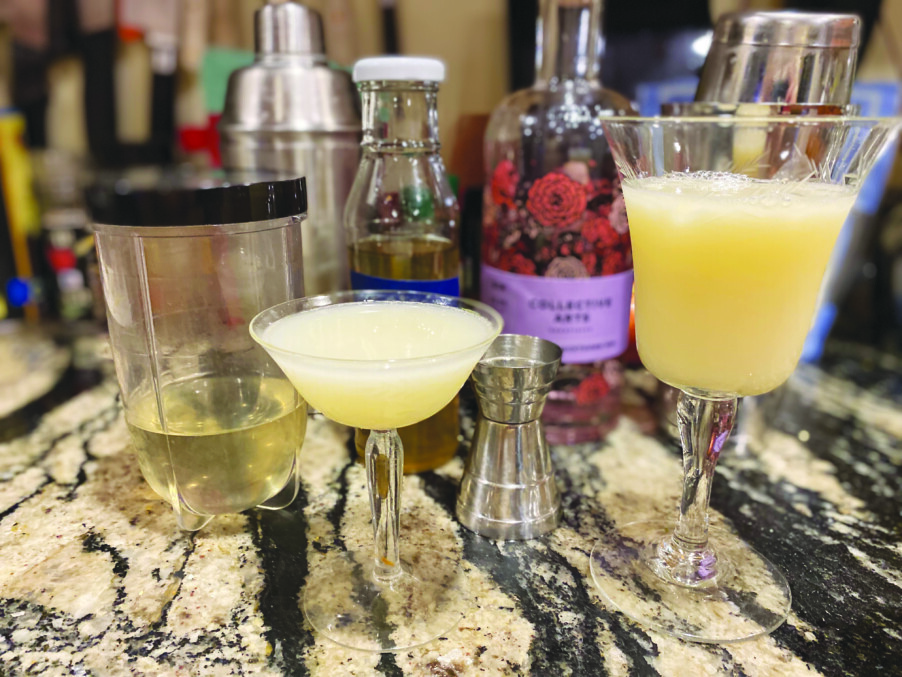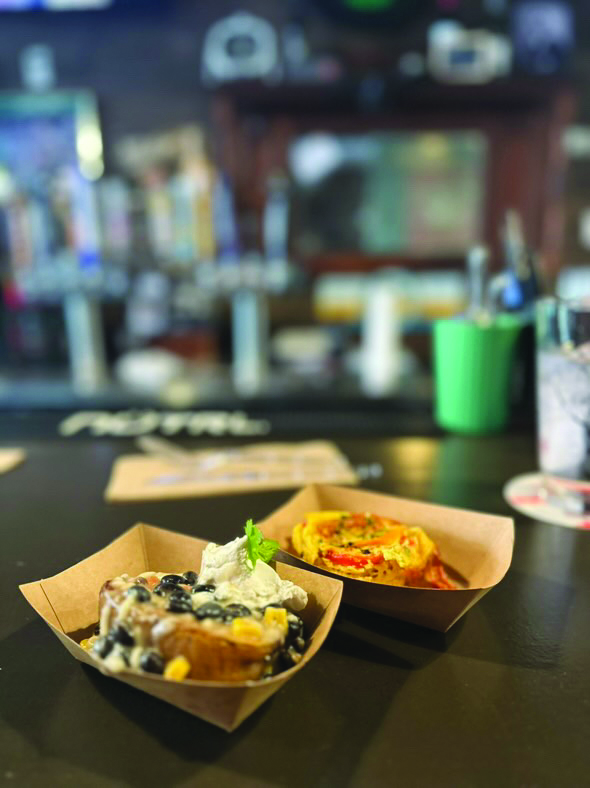So, let’s say, for the sake of argument, that you’ve got a recipe for something that sounds really delicious and intriguing, but it’s been written by a chef, or in this case a bartender, who has access to special equipment and ingredients that a typical home enthusiast doesn’t. Because they are experts, it is likely that their version of a recipe will be excellent. The question is, will it be so much better than a DIY enthusiast’s work-around that it is worth going to the extra time and effort to make as written?
In this case, yes. Yes, it will.
As originally conceived of, this recipe supposes that the cocktail maker has access to a sous vide, a piece of laboratory or commercial kitchen equipment that keeps a water bath at a consistent temperature.
I’ve run this recipe two ways, once with sous vide-infused pineapple gin, and once with regular gin and pineapple juice. The work-around is very good; don’t get me wrong. But the version with shmancy lab-equipment-infused pineapple gin is about 75 percent better. It is simply outstanding.
Think of this as a project.
Ingredients
- 2 ounces pineapple-infused gin (see below) – alternatively, 1½ ounces gin and 1 ounce pineapple juice
- 1 teaspoon Licor 43
- ¾ ounce celery syrup (see below)
- ¾ ounce fresh squeezed lemon juice
- 1 teaspoon Greek yogurt
- 2 dashes celery bitters
Combine all ingredients with ice in a cocktail shaker. Shake enthusiastically. Strain into a coupé glass.
Sip, while listening to the Bangles’ 1987 cover of “Hazy Shade of Winter.”
This cocktail tastes of gin and pineapple, and yogurt (a tiny bit), and sunshine.
Pineapple-Infused Gin
Combine equal amounts of London dry gin — Gordon’s is a good choice for this — and fresh pineapple in an air-tight container. This could be a lidded jar or a zip-close plastic bag. Soak in a 155°F water bath for two hours. If you own a sous vide, you probably used it once or maybe twice when you first got it, then put it away and haven’t touched it in several months. This will be a good opportunity to reintroduce yourself to it, and tentatively become friends.
If you don’t own a sous vide — and really, unless you are an actual chef, or desperately obsessed with cooking competition shows, why would you? — this won’t be difficult, per se, but it will be a fiddly couple of hours.
Take a small plastic or Styrofoam cooler and fill it about halfway with very hot water. Use a frying/candy thermometer to find out what the temperature of the water is. If it is above 160°F, wait until the temperature comes down to around there to insert your container of gin and pineapple into the water bath. If it is below 150°F, pour a little bit of boiling water from a kettle into the cooler, and stir, until it reaches 160°F, then put your container in the water bath.
Get a chair from the dining or living room, and sit near the water bath, checking on the temperature every five minutes or so. Each time the water drops below 150°F, nudge it back to 160°F with some more boiling water. Keep this going for two hours.
Regardless of which method you used to infuse your gin, at the end of two hours strain it with a fine-mesh strainer and run it through a coffee filter. Seal tightly and use within a week or so.
Celery Syrup
- ¾ cup (148 g) white sugar
- ¾ cup (179 g) water
- 2 celery stalks, finely chopped
- 1 teaspoon celery seeds
Combine all ingredients in a small saucepan and bring to a boil. Simmer for five minutes, then set aside, covered, for several hours. Strain with a fine-mesh strainer, and again with a coffee filter. Surprisingly, it will be a beautiful golden color. Refrigerate and keep for two to three weeks.
Featured Photo: Two celery sours. Original recipe on left, in smaller glass. Workaround recipe on right made with regular gin and pineapple juice. Photo by John Fladd.






